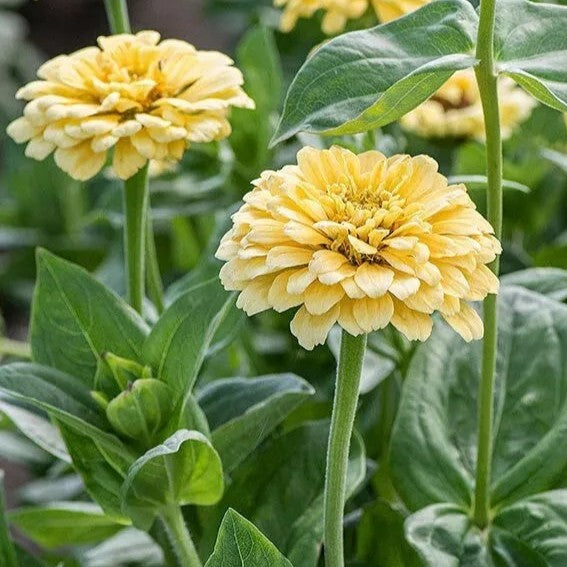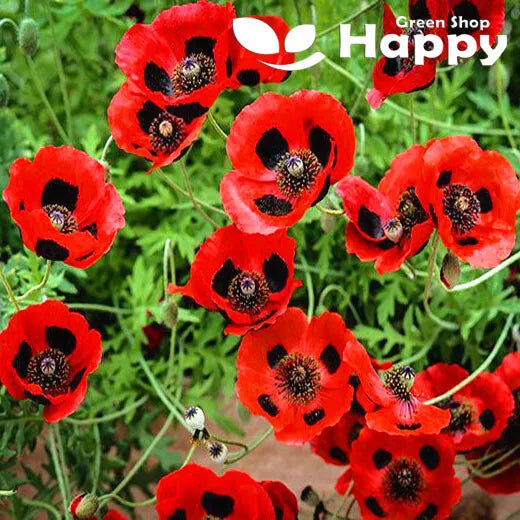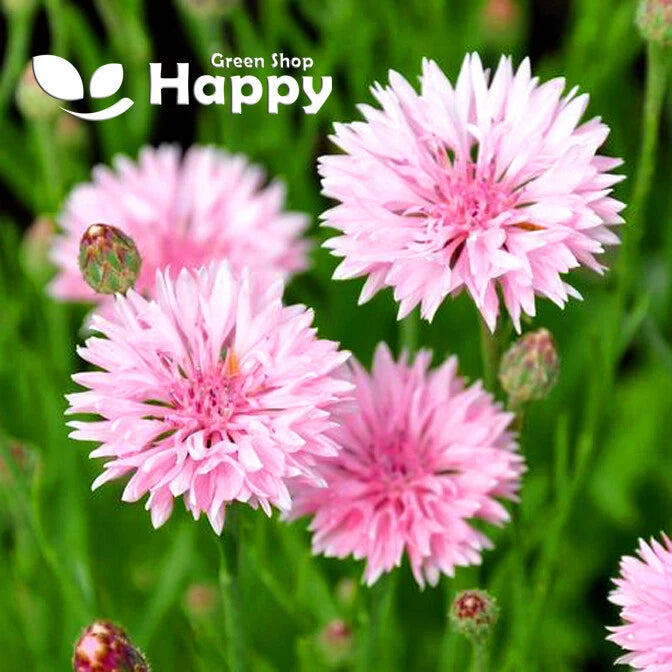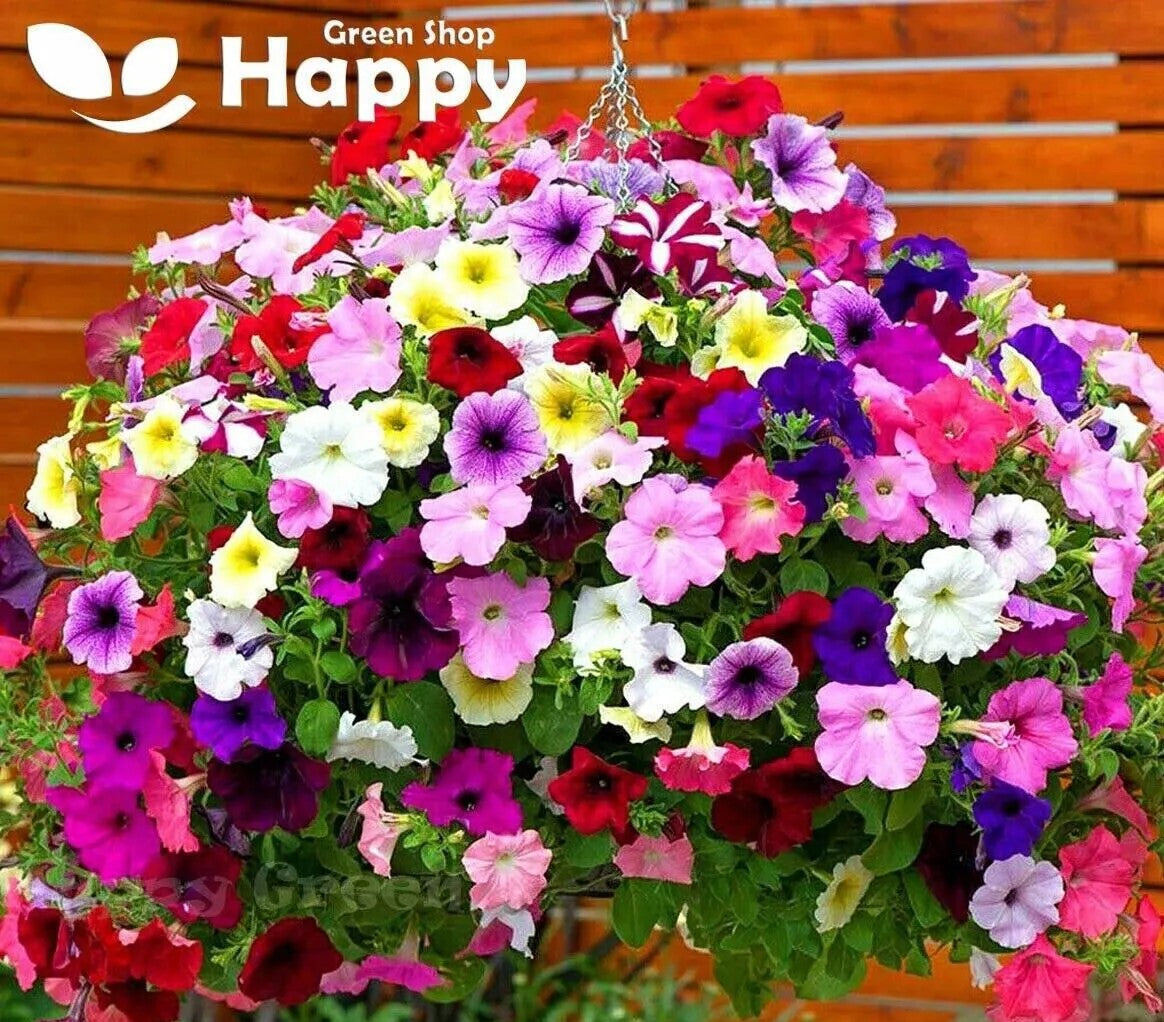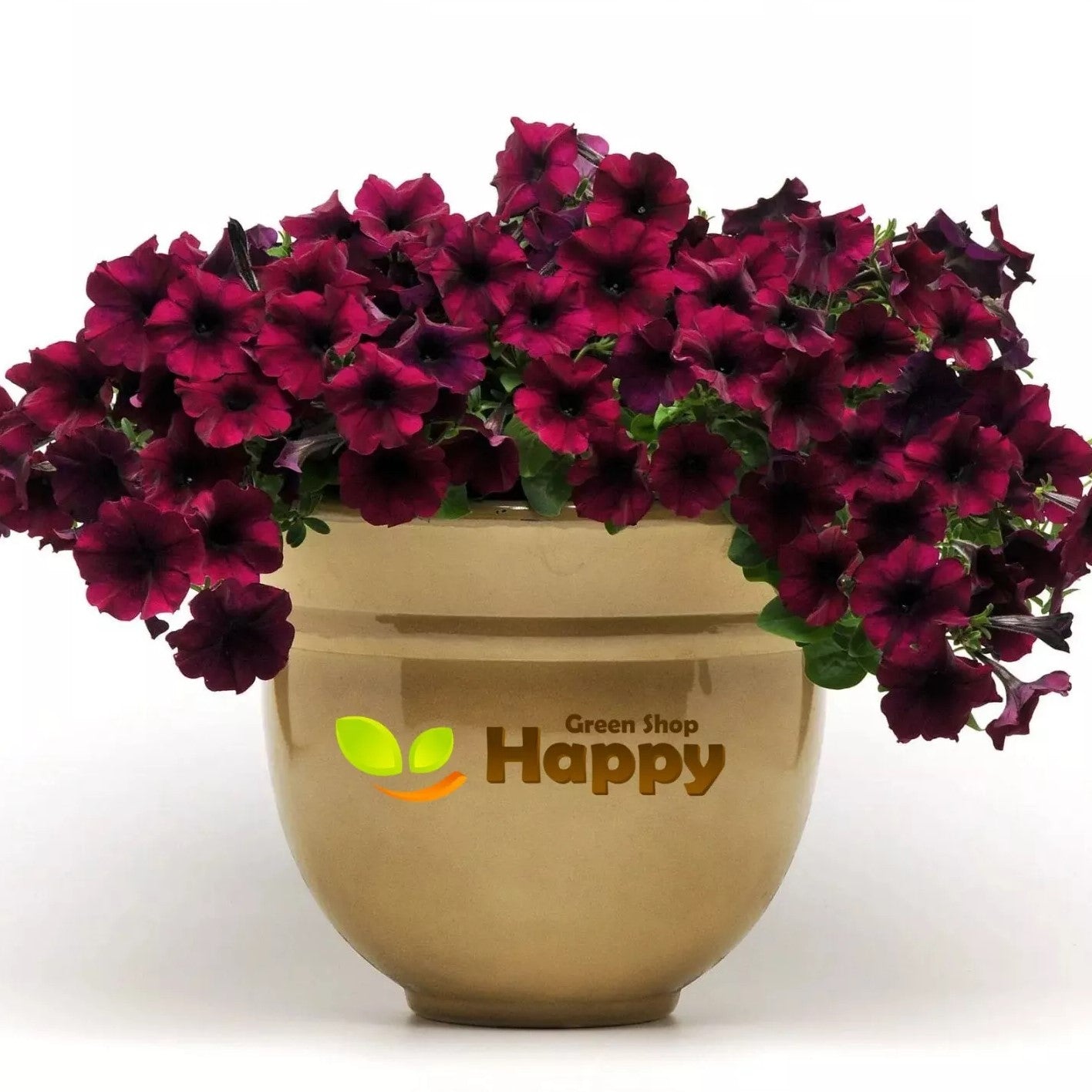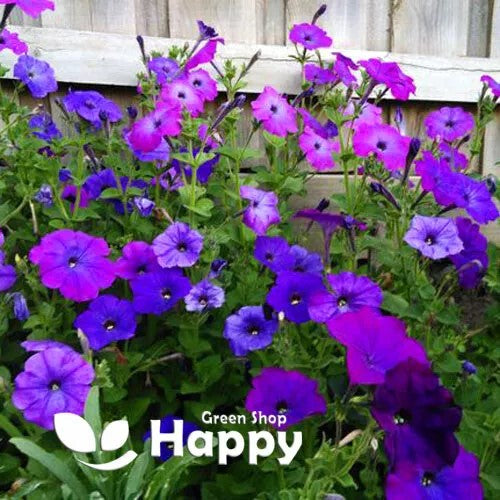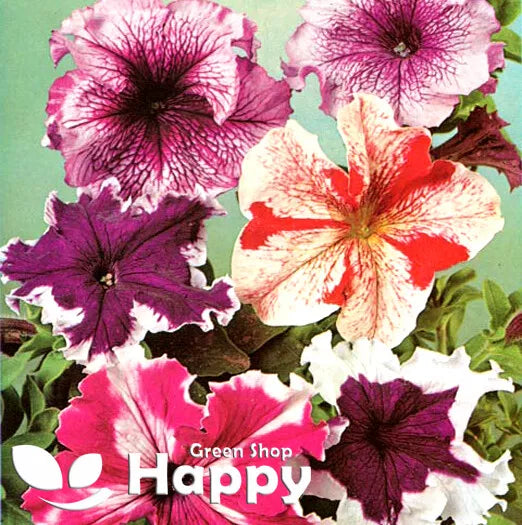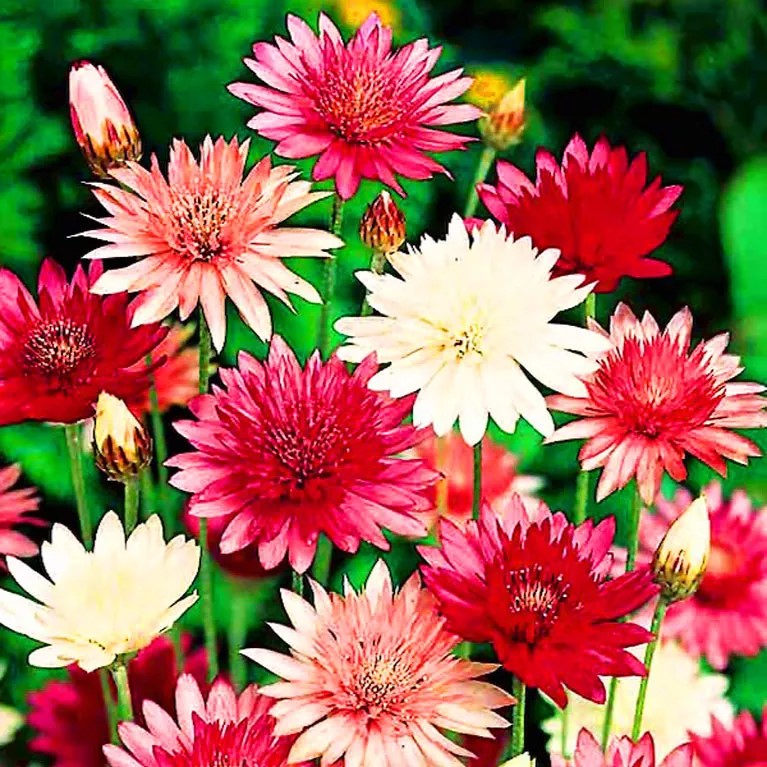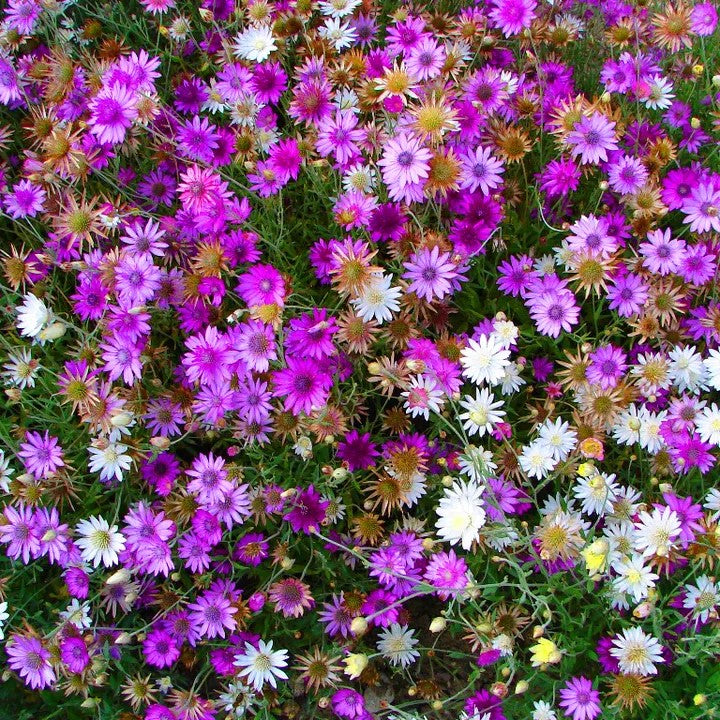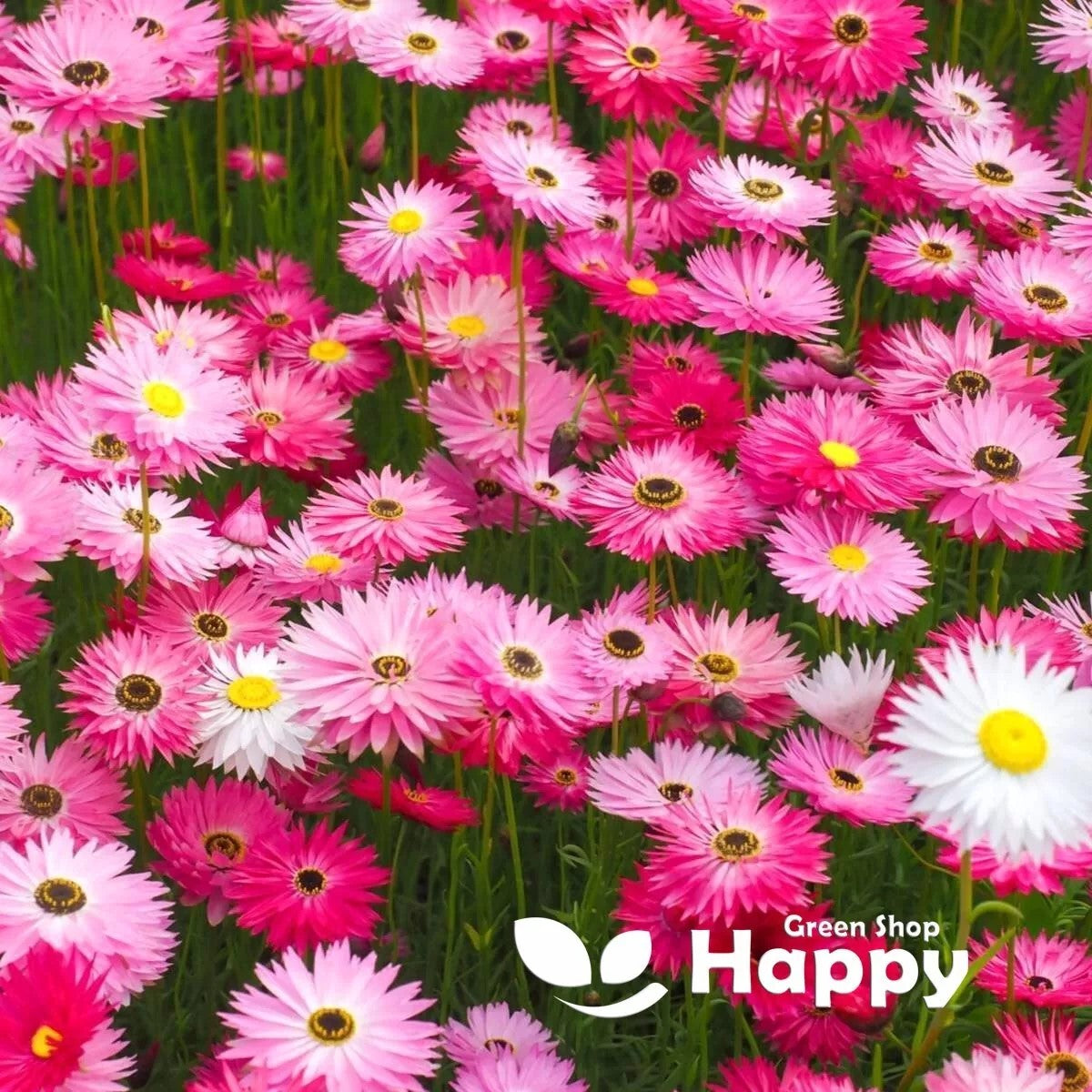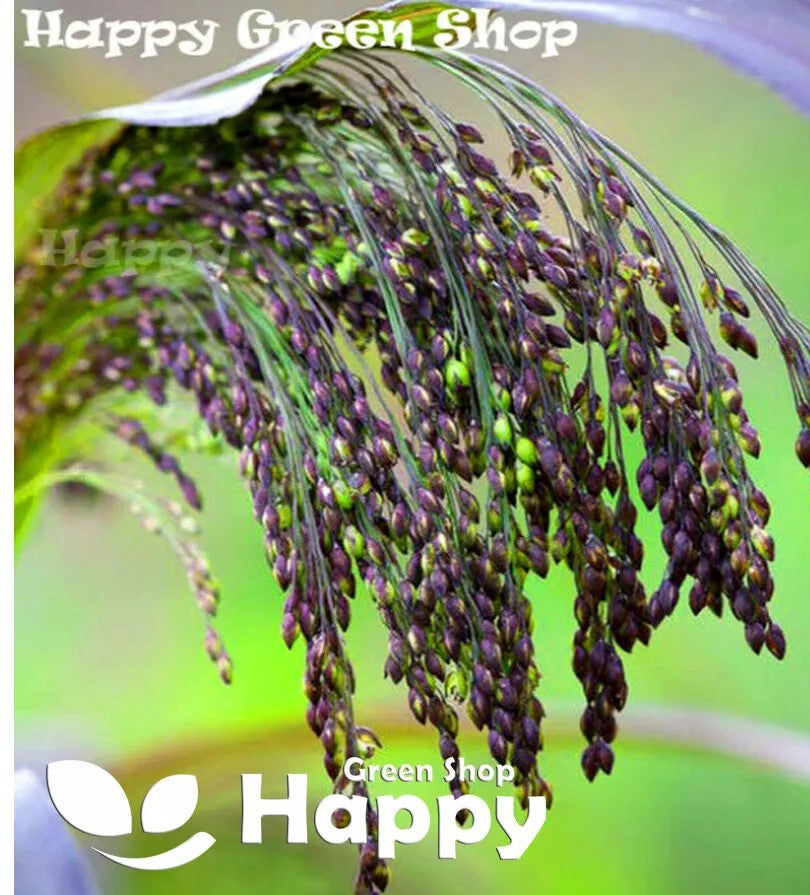Sort by:
180 products
180 products
Poppy 'Ladybird' – 3000 Seeds (Papaver commutatum)
Add drama and charm to your garden with Poppy 'Ladybird'. This eye-catching variety produces vivid scarlet-red blooms each marked with a bold black blotch at the base of every petal, reminiscent of a ladybird’s spots. Compact and easy to grow, it creates a striking display in beds, borders, and wildflower plantings.
Why Grow 'Ladybird'
-
Striking scarlet-red flowers with black blotches
-
Compact and easy to grow
-
Long flowering season
-
Attracts bees and pollinators
Key Features
-
Type: Hardy annual (Papaver commutatum)
-
Height: 30–45 cm
-
Flowering: June–August
-
Position: Full sun
-
Uses: Borders, wildflower meadows, pollinator gardens
Ideal For
-
Cottage and wildflower gardens
-
Adding bold splashes of color
-
Naturalizing in meadows or borders
-
Wildlife-friendly plantings
Sowing & Growing
-
Sow outdoors: March–May or September–October
-
Sow thinly in prepared soil, cover lightly
-
Germination: 10–20 days
-
Thin seedlings to 15–20 cm apart
-
Prefers poor, well-drained soil in full sun
Pink Cornflower 'Tom Pouce Pink' – Seeds
(Centaurea cyanus)
Pink Cornflower 'Tom Pouce Pink' is a charming twist on the classic wildflower, offering soft pink, frilly blooms that brighten any garden. Easy to grow and rich in nectar, this variety attracts bees, butterflies, and other pollinators while providing long-lasting cut flowers with a delicate cottage garden appeal.
Why Grow Pink Cornflower 'Tom Pouce Pink'?
-
Rare, pastel-pink form of the traditional cornflower
-
Pollinator-friendly & easy to grow
-
Excellent as cut flowers or for naturalizing
-
Hardy and adaptable in a range of soils
Key Features
-
Type: Hardy annual
-
Height: 60–80 cm
-
Blooms: June–September
-
Position: Full sun
-
Soil: Light, well-drained soil
Ideal For
-
Wildflower & pollinator gardens
-
Cottage-style plantings
-
Borders & meadows
-
Fresh cut flower arrangements
Sowing & Growing
-
Sow outdoors: March–May or August–September for earlier blooms next year
-
Sow directly into prepared soil, covering lightly
-
Thin seedlings to 15–20 cm apart
-
Germination: 7–14 days
-
Deadhead regularly to encourage more flowers
Petunia Mix – Seeds (Petunia hybrida pendula)
The Petunia Mix is a trailing variety producing a cascade of colorful blooms in shades of pink, purple, red, and white. Its pendulous habit makes it perfect for hanging baskets, window boxes, and containers, creating a vibrant, overflowing display all summer long.
What Makes It Special
-
Cascading trailing habit for dramatic garden displays
-
Mixed vibrant colors for long-lasting visual appeal
-
Continuous flowering from early summer to autumn
-
Ideal for creating striking hanging baskets and container arrangements
Key Features
-
Botanical name: Petunia hybrida pendula
-
Variety: Mix
-
Seed count: Approx. seeds per pack
-
Height/Spread: 20–25 cm tall, trailing 40–50 cm
-
Position: Full sun; fertile, well-drained soil
-
Flowering period: June–October
Ideal For
-
Hanging baskets and window boxes
-
Patio containers and garden planters
-
Adding trailing color to borders and raised beds
-
Brightening balconies and terraces
Sowing Instructions
-
When to sow: February–April indoors
-
How to sow:
-
Surface sow on moist seed compost
-
Press lightly; do not cover
-
Maintain 20–24°C; germination 10–21 days
-
-
After germination:
-
Transplant seedlings into individual pots when large enough
-
Harden off before planting out after the last frost
-
Space 20–25 cm apart for trailing growth
-
Petunia F1 Quinto Burgundy – Seeds (Petunia multiflora Dwarf)
The Petunia F1 Quinto Burgundy is a compact, dwarf variety producing rich, deep burgundy blooms that bring a dramatic splash of color to your garden. Its bushy habit makes it ideal for bedding, containers, hanging baskets, and window boxes. Continuous flowering throughout summer ensures long-lasting visual appeal.
What Makes It Special
-
Deep, vibrant burgundy flowers with strong color retention
-
Dwarf, compact habit perfect for small spaces and containers
-
Long flowering season from early summer to autumn
-
Hardy and easy to grow, ideal for both beginner and experienced gardeners
Key Features
-
Botanical name: Petunia multiflora
-
Variety: F1 Quinto Burgundy (Dwarf)
-
Seed count: Approx. seeds per pack
-
Height: 20–25 cm
-
Position: Full sun; fertile, well-drained soil
-
Flowering period: June–October
Ideal For
-
Bedding displays
-
Patio pots and containers
-
Hanging baskets and window boxes
-
Adding rich, dramatic color to small gardens
Sowing Instructions
-
When to sow: February–April indoors
-
How to sow:
-
Surface sow on moist seed compost
-
Press lightly; do not cover
-
Keep at 20–24°C; germination takes 10–21 days
-
-
After germination:
-
Transplant seedlings into individual pots once large enough
-
Harden off and plant out after last frost, spacing 20 cm apart
-
Petunia ‘Alderman Violet’ – Seeds
(Petunia nana compacta) – Annual
The Petunia ‘Alderman Violet’ is a compact and richly flowering variety, producing a mass of deep violet blooms all summer long. With its neat, low-growing habit, it is ideal for edging, borders, rock gardens, or containers. Its continuous flowering and striking color make it a favorite for vibrant summer displays.
Key Features
-
Type: Annual
-
Height: 20–25 cm
-
Spread: 25–30 cm
-
Flowers: Vibrant violet, trumpet-shaped blooms
-
Blooming period: June–October
-
Position: Full sun or partial shade
-
Soil: Light, fertile, well-drained soil
Ideal For
-
Bedding and edging
-
Hanging baskets & containers
-
Window boxes
-
Rock gardens and summer borders
Sowing & Growing
-
Sow indoors: February–April on the surface of moist seed compost (do not cover; light aids germination).
-
Germination: 10–20 days at 20–25°C.
-
Transplant: Prick out seedlings when large enough, then harden off before planting outdoors after last frost.
-
Care: Deadhead regularly to encourage continuous flowering. Water and feed for best results.
Petunia ‘Superbissima’ Mix – Seeds (Petunia grandiflora)
The Petunia ‘Superbissima’ Mix is a grandiflora variety featuring large, vibrant blooms in a range of colors including pink, purple, red, and white. With a bushy, upright habit, these petunias are ideal for bedding, borders, containers, and garden displays, offering a long-lasting, showy splash of summer color.
What Makes It Special
-
Large, showy flowers in a vivid color mix
-
Upright, bushy growth ideal for beds and containers
-
Continuous blooms throughout summer for long-lasting impact
-
Easy to grow and highly ornamental
Key Features
-
Botanical name: Petunia grandiflora
-
Variety: ‘Superbissima’ Mix
-
Seed count: Approx. seeds per pack
-
Height: 25–30 cm
-
Position: Full sun; fertile, well-drained soil
-
Flowering period: June–October
Ideal For
-
Bedding displays and borders
-
Patio pots and containers
-
Garden planters and decorative spaces
-
Adding vibrant summer color to any garden
Sowing Instructions
-
When to sow: February–April indoors
-
How to sow:
-
Surface sow on moist seed compost
-
Press lightly; do not cover
-
Keep at 20–24°C; germination 10–21 days
-
-
After germination:
-
Transplant seedlings into individual pots when large enough
-
Harden off before planting out after the last frost
-
Space 20–25 cm apart
-
Paper Daisy Immortelle Mix Seeds (Xeranthemum annuum)
The Paper Daisy Immortelle Mix produces a colorful assortment of long-lasting, daisy-like blooms perfect for fresh or dried arrangements. Its compact, upright growth habit and vibrant flowers make it an excellent choice for borders, beds, and container displays. Loved for its ability to retain shape and color when dried, it’s ideal for everlasting bouquets and garden decoration.
What Makes It Special
-
Colorful, long-lasting blooms that dry naturally for arrangements
-
Compact, upright growth ideal for garden beds and containers
-
Easy to grow and low-maintenance
-
Attracts bees and butterflies while adding vibrant summer color
Key Features
-
Botanical name: Xeranthemum annuum
-
Variety: Immortelle Mix
-
Seed count: Approx. seeds per pack
-
Height/Spread: 40–60 cm tall, 25–35 cm spread
-
Position: Full sun; well-drained soil
-
Flowering period: June–October
Ideal For
-
Fresh-cut and dried flower arrangements
-
Garden borders, beds, and cottage gardens
-
Pollinator-friendly plantings
-
Container displays and floral crafts
Sowing Instructions
-
When to sow: March–May indoors; April–June outdoors
-
How to sow:
-
Sow seeds on the surface of moist seed compost and press lightly; do not cover too deeply
-
Germination in 10–14 days at 18–22°C
-
-
Transplanting: Prick out seedlings when large enough; plant outdoors after frost
-
Care: Water regularly and deadhead to prolong flowering and encourage continuous blooms
Paper Daisy Everlasting Giant-Flowered Mixture Seeds
The Paper Daisy Everlasting produces large, vibrant, daisy-like blooms that retain their color and shape when dried. This easy-to-grow annual is perfect for fresh-cut arrangements, dried flower crafts, or adding bold, long-lasting color to garden beds and borders. Its mounding habit and sturdy stems make it a versatile addition to any garden.
What Makes It Special
-
Large, colorful daisy-like blooms with excellent longevity
-
Flowers dry naturally, perfect for everlasting arrangements
-
Easy-to-grow, hardy, and low-maintenance
-
Attracts bees and butterflies while adding bold color to borders
Key Features
-
Botanical name: Helichrysum / Xerochrysum bracteatum
-
Variety: Giant-flowered mixture
-
Seed count: Approx. seeds per pack
-
Height/Spread: 40–60 cm tall, 25–35 cm spread
-
Position: Full sun; well-drained soil
-
Flowering period: June–October
Ideal For
-
Fresh-cut or dried flower arrangements
-
Borders, beds, and cottage gardens
-
Pollinator-friendly gardens
-
Container displays and floral crafts
Sowing Instructions
-
When to sow: March–May indoors; April–June outdoors
-
How to sow:
-
Sow seeds on the surface of moist seed compost and press lightly; do not cover too deeply
-
Keep at 18–22°C; germination occurs in 10–14 days
-
-
Transplanting: Prick out seedlings when large enough; plant outside after frost
-
Care: Water regularly and remove faded flowers to encourage continuous blooming
Panic Grass / Violet Millet Seeds (Panicum violaceum)
Panic Grass, also known as Violet Millet, is a stunning ornamental grass with a strong, upright habit and arching leaves tipped with violet tones. The plant produces dark purple seed heads that add bold color, structure, and movement to borders and mixed plantings. Highly versatile, it can be used as a striking centerpiece in containers, or as a cut-and-dry feature for floral arrangements.
What Makes It Special
-
Striking violet-purple flower spikes
-
Strong, upright growth habit – adds height and structure
-
Excellent for cut and dried arrangements
-
Easy to grow and quick to mature
Key Features
-
Botanical name: Panicum violaceum
-
Common names: Panic Grass, Violet Millet
-
Seed count: Approx. seeds per pack
-
Height/Spread: 60–120 cm tall, 30–50 cm spread
-
Position: Full sun; tolerates a wide range of soils
-
Flowering period: Summer to early autumn
-
Lifespan: Annual grass
Ideal For
-
Borders and background planting
-
Containers and patio pots
-
Adding contrast in mixed plantings
-
Cut flowers and dried arrangements
-
Ornamental grass displays
Sowing Instructions
-
When to sow: March–May indoors, or April–June outdoors after frost danger has passed
-
How to sow:
-
Sow thinly in trays or directly outdoors in finely prepared soil
-
Cover lightly with soil (seeds need some light for germination)
-
Keep moist until seedlings appear (10–21 days)
-
-
Transplant/Thin: Space plants 30–40 cm apart
-
Care: Thrives in sun and well-drained soil; minimal maintenance needed
Showing 63/180




